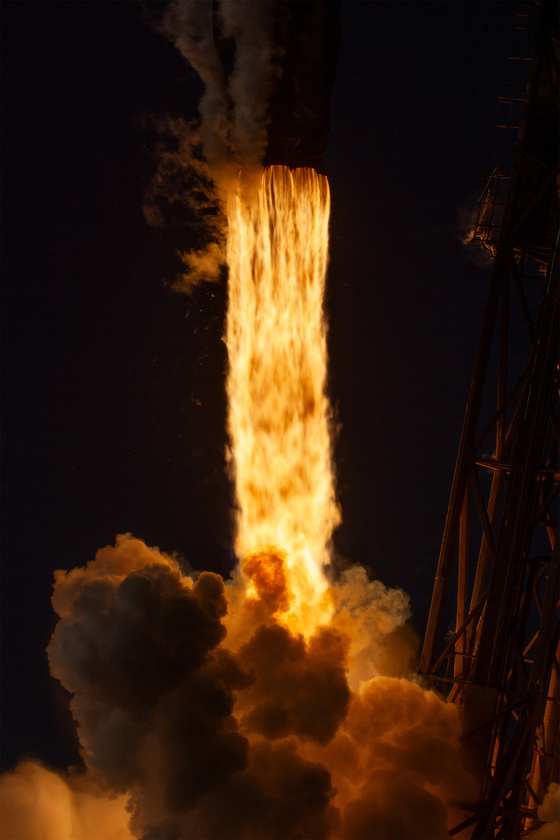In an op-ed defending the paper’s decision to stop making presidential endorsements, The Washington Post owner Jeff Bezos acknowledged the widespread distrust of the media, citing a Gallup poll that ranked journalists and the media as the least trusted profession, even below the U.S. Congress.
The Amazon founder attributed the lack of trust to the media’s perceived bias, pointing out that “Many people are turning to off-the-cuff podcasts," and social media. He argued that presidential endorsements create a perception of bias and do not influence voters’ decisions. “No undecided voters in Pennsylvania are going to say, ‘I’m going with Newspaper A’s endorsement.’ None,” he writes.
According to recent reports, the Blue Origin founder who bought The Washington Post from the Graham Holdings Company for $250 million on Oct. 1, 2013, has reportedly sought to hire more conservative writers at the far-left paper. And some Wall Street observers say Bezos may be trying to the right the ship at the money-losing media outlet.
Writers at the Post, like the ones at most mainstream media outlets in the U.S, are far-left Democrat activists known for their biased vitriolic reports and opinion pieces targeting conservatives, Republicans and especially Donald Trump.
The Post was responsible for many of the fake news reports accusing the former president of colluding with Russia during the 2016 presidential elections and throughout his presidency, a claim later debunked by the U.S. justice department.
In his op-ed, Bezos emphasized his commitment to maintaining the Post’s independence and credibility, stating that he will not allow the paper to “stay on autopilot and fade into irrelevance.” He argued that the stakes are too high for the paper to simply follow the crowd or conform to prevailing opinions, and that he will continue to make decisions that prioritize the paper’s journalistic integrity.
Since the announcement that the Post will not endorse a presidential candidate, far-left activists and media talking heads, who had hoped the paper would endorse Kamala Harris, have been harshly criticizing Bezos, mocking the paper's widely panned 'Democracy dies in darkness' motto during Trump's presidency. Many have reportedly canceled their subscriptions to the paper.
Far-left outlet Los Angeles Times also faced backlash earlier, after billionaire owner Patrick Soon-Shiong said the paper will not endorse any candidate in this year's presidential elections, notable since the outlet had supported Harris throughout her political career in California.
The Times owner said that his decision not to endorse would be less divisive in a tumultuous election year. “I have no regrets whatsoever. In fact, I think it was exactly the right decision,” he said in an interview with the paper on Friday. “The process was [to decide]: how do we actually best inform our readers? And there could be nobody better than us who try to sift the facts from fiction” while leaving it to readers to make their own final decision.
Since the Post's announcement, another left-wing outlet, USA Today has also announced that it will not endorse a presidential candidate in the 2024 election.
According to USA Today’s spokesperson, Lark-Marie Antón, the outlet will not endorse a candidate at the national level, but local editors at USA Today Network publications across the country have the discretion to endorse at the state or local level. Antón stated that the decision is based on the outlet’s commitment to providing readers with “the facts that matter and the trusted information they need to make informed decisions.”
Here's Jeff Bezos' Washington Post op-ed in full:
In the annual public surveys about trust and reputation, journalists and the media have regularly fallen near the very bottom, often just above Congress. But in this year’s Gallup poll, we have managed to fall below Congress. Our profession is now the least trusted of all. Something we are doing is clearly not working.
Let me give an analogy. Voting machines must meet two requirements. They must count the vote accurately, and people must believe they count the vote accurately. The second requirement is distinct from and just as important as the first.
Likewise with newspapers. We must be accurate, and we must be believed to be accurate. It’s a bitter pill to swallow, but we are failing on the second requirement. Most people believe the media is biased. Anyone who doesn’t see this is paying scant attention to reality, and those who fight reality lose. Reality is an undefeated champion. It would be easy to blame others for our long and continuing fall in credibility (and, therefore, decline in impact), but a victim mentality will not help. Complaining is not a strategy. We must work harder to control what we can control to increase our credibility.
Presidential endorsements do nothing to tip the scales of an election. No undecided voters in Pennsylvania are going to say, “I’m going with Newspaper A’s endorsement.” None. What presidential endorsements actually do is create a perception of bias. A perception of non-independence. Ending them is a principled decision, and it’s the right one. Eugene Meyer, publisher of The Washington Post from 1933 to 1946, thought the same, and he was right. By itself, declining to endorse presidential candidates is not enough to move us very far up the trust scale, but it’s a meaningful step in the right direction. I wish we had made the change earlier than we did, in a moment further from the election and the emotions around it. That was inadequate planning, and not some intentional strategy.
I would also like to be clear that no quid pro quo of any kind is at work here. Neither campaign nor candidate was consulted or informed at any level or in any way about this decision. It was made entirely internally. Dave Limp, the chief executive of one of my companies, Blue Origin, met with former president Donald Trump on the day of our announcement. I sighed when I found out, because I knew it would provide ammunition to those who would like to frame this as anything other than a principled decision. But the fact is, I didn’t know about the meeting beforehand. Even Limp didn’t know about it in advance; the meeting was scheduled quickly that morning. There is no connection between it and our decision on presidential endorsements, and any suggestion otherwise is false.
When it comes to the appearance of conflict, I am not an ideal owner of The Post. Every day, somewhere, some Amazon executive or Blue Origin executive or someone from the other philanthropies and companies I own or invest in is meeting with government officials. I once wrote that The Post is a “complexifier” for me. It is, but it turns out I’m also a complexifier for The Post.
You can see my wealth and business interests as a bulwark against intimidation, or you can see them as a web of conflicting interests. Only my own principles can tip the balance from one to the other. I assure you that my views here are, in fact, principled, and I believe my track record as owner of The Post since 2013 backs this up. You are of course free to make your own determination, but I challenge you to find one instance in those 11 years where I have prevailed upon anyone at The Post in favor of my own interests. It hasn’t happened.
Lack of credibility isn’t unique to The Post. Our brethren newspapers have the same issue. And it’s a problem not only for media, but also for the nation. Many people are turning to off-the-cuff podcasts, inaccurate social media posts and other unverified news sources, which can quickly spread misinformation and deepen divisions. The Washington Post and the New York Times win prizes, but increasingly we talk only to a certain elite. More and more, we talk to ourselves. (It wasn’t always this way — in the 1990s we achieved 80 percent household penetration in the D.C. metro area.)
While I do not and will not push my personal interest, I will also not allow this paper to stay on autopilot and fade into irrelevance — overtaken by unresearched podcasts and social media barbs — not without a fight. It’s too important. The stakes are too high. Now more than ever the world needs a credible, trusted, independent voice, and where better for that voice to originate than the capital city of the most important country in the world? To win this fight, we will have to exercise new muscles. Some changes will be a return to the past, and some will be new inventions. Criticism will be part and parcel of anything new, of course. This is the way of the world. None of this will be easy, but it will be worth it. I am so grateful to be part of this endeavor. Many of the finest journalists you’ll find anywhere work at The Washington Post, and they work painstakingly every day to get to the truth. They deserve to be believed.
















